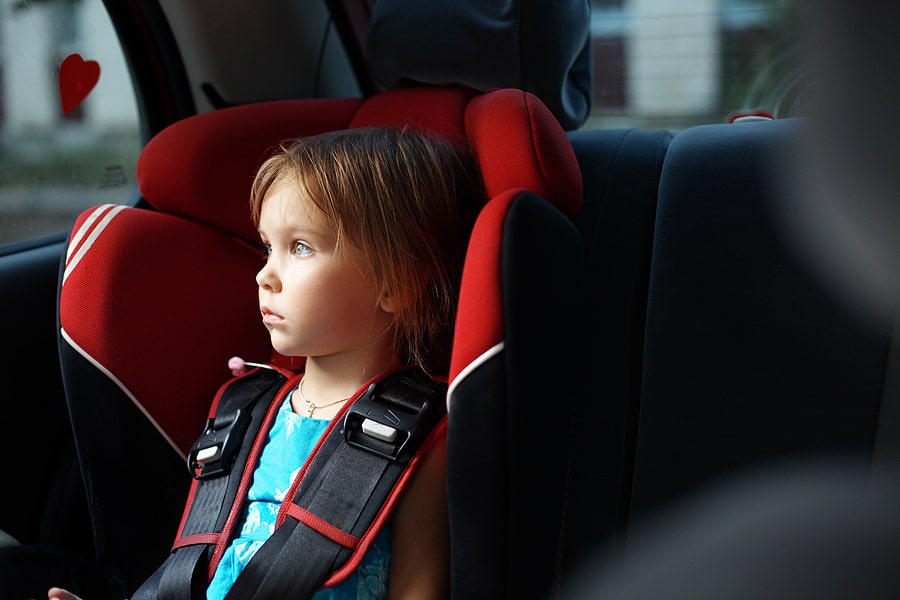While most people know that very young children must be secured in a car seat to stay safe on the road, not all adults are aware of the difference between a car seat and a booster seat. For one, car seats have a five-point harness. Booster seats, on the other hand, lift a child so that they can safely use the vehicle’s seat belt to strap in.
In Nevada, the law sets requirements for how long an underage passenger should be in a car seat or booster seat. Drivers can face penalties if they do not secure the child appropriately. In this article, our Vegas child injury attorneys describe booster seat laws in Nevada, which are designed to keep children safe on the road.
Booster Seat Requirements
Nevada’s booster seat requirements are a part of the State’s car seat laws. In Nevada, the law requires drivers to secure a child in an approved child restraint system seat if they are six years old or younger and weigh less than 60 pounds.
Once a child is older than six or weighs more than 60 pounds, the law no longer applies. However, Nevada’s Department of Motor Vehicles encourages drivers to keep the child in a booster seat until they are at least eight years old but no more than 12. Typically, during this time a child grows enough to safely wear a regular seat belt.
The booster seat laws do have a couple of exceptions. One exception is if you are carrying a minor through the means of public transportation. Children do not need to be in a child restraint system if they are riding in a taxi, any kind of bus, or an emergency vehicle.
In Nevada, the laws also do not apply if the child has a medical reason not to use a booster seat. A licensed medical provider will need to determine if the use of such a seat is dangerous to the child. Weight, physical unfitness, and medical conditions are factors that could make a booster seat impractical. The physician will sign a statement, which the driver must have with them when transporting the child.
Keeping Young Children Secure
At first, an infant and young toddler should be secured in a car seat. They should be facing the backseat until they are big enough (according to the seat’s specifications) for the child restraint system to face forward.
When the minor reaches the age of four, they can start sitting in a booster seat. They should continue to use the booster seat until they are six or the car’s seat belt fits them properly. When an adult secures a child into a booster seat, they should use both the shoulder and lap belt to strap the child in.
Legally, drivers need to make sure the booster seat is installed properly, according to the seat’s specifications. They must be located in the backseat. Booster seats come in two variations. One is the high-back, which protects the child’s head and neck. The other type is backless, which raises the child so that the seat belt fits them.
Each booster seat is different, so the adult will need to read the manufacturer’s instruction manual to properly secure the seat and ensure it fits the child’s height and weight. If the adult cannot locate the manual, they can secure the booster seat in a manner the National Highway Traffic Safety Administration has approved.
Penalties for Not Securing a Child Correctly
Under the law, a driver’s failure to use a booster seat or another approved child restraint system can result in punishment. The first violation can lead to a fine of anywhere between $100 and $500. A judge may permit the driver to complete between 10 and 50 hours of community service instead. If the driver is convicted of a second offense, the fine is between $500 and $1,000. The court might order the driver to do 50 to 100 hours of community service instead. A third violation can lead to the temporary suspension of a driver’s license. The suspension generally lasts anywhere from 30 to 180 days.
In some cases, the judge will require the driver to complete a child safety course within 60 days of the sentencing hearing. The Department of Public Safety has approved certain persons and agencies to provide the training program and child safety system inspections. The agency could impose a reasonable fee, which may include the cost of a booster seat.
Once the person finishes the course, the judge may forgive any fine or community service requirement. The full waiver is only available if it is the driver’s first offense. For a second violation, the court may cut the fine or community service hours in half. However, the reduction can only apply if the defendant did not get their penalty waived the first time.
A Higher Car Insurance Rate

Some drivers who are convicted of an offense under Nevada’s child restraint laws might have to worry about an increase in their insurance rate on top of a fine. Traffic violations often can lead to people paying more for coverage. The increase in the insurance rate generally depends on the severity of the violation. For failing to use a booster seat, a person may see the rate go up by 4.3 percent. Drivers should look at their insurance policy to know if a child restraint system offense has affected their coverage premium.
Booster seat laws do not only apply to parents and guardians. Caretakers, other family members, babysitters, and other adults need to secure children properly in vehicles. If someone else did not properly strap in the minor, a driver could still be liable for any injuries the child receives. For more information on booster seat laws, our Reno car accident and Vegas car accident lawyers are here to assist you.


